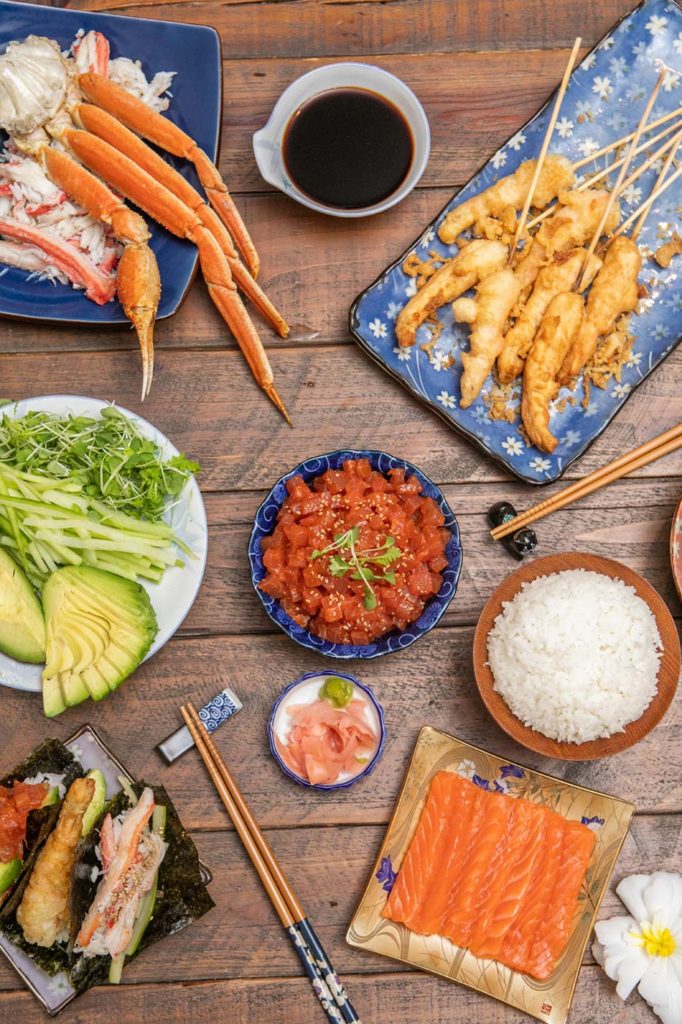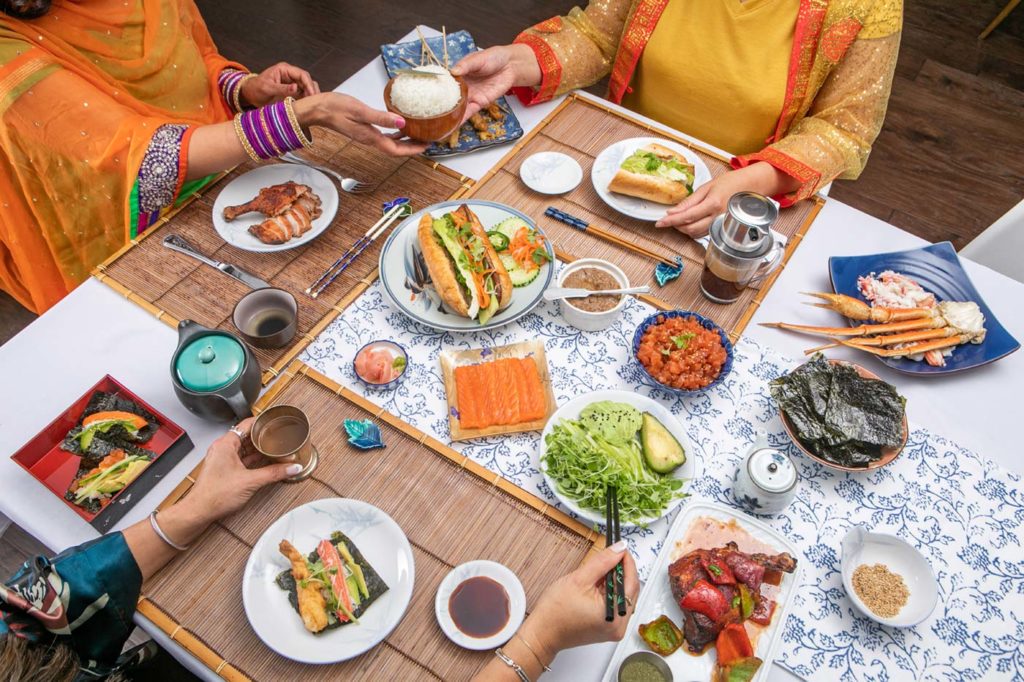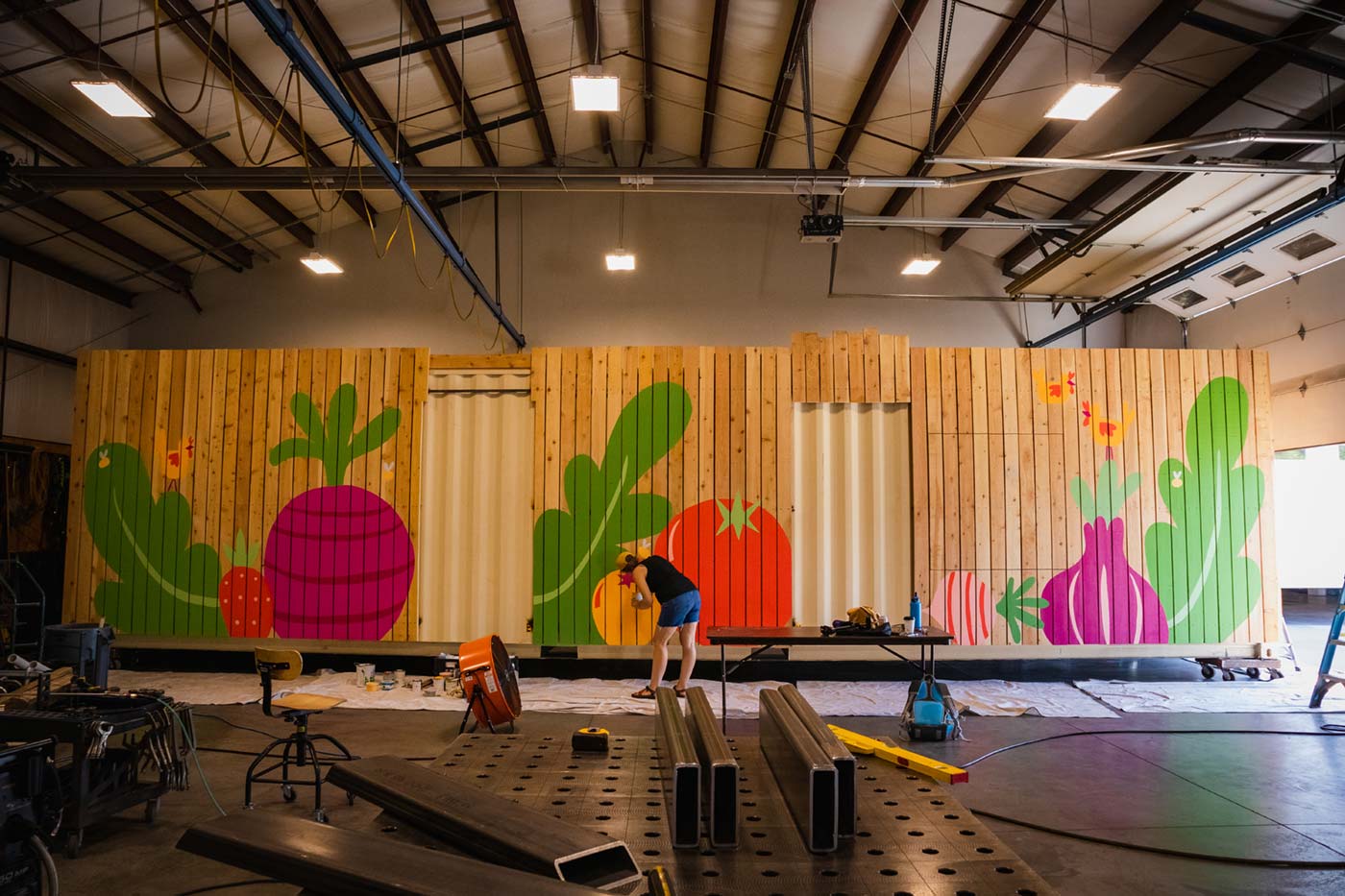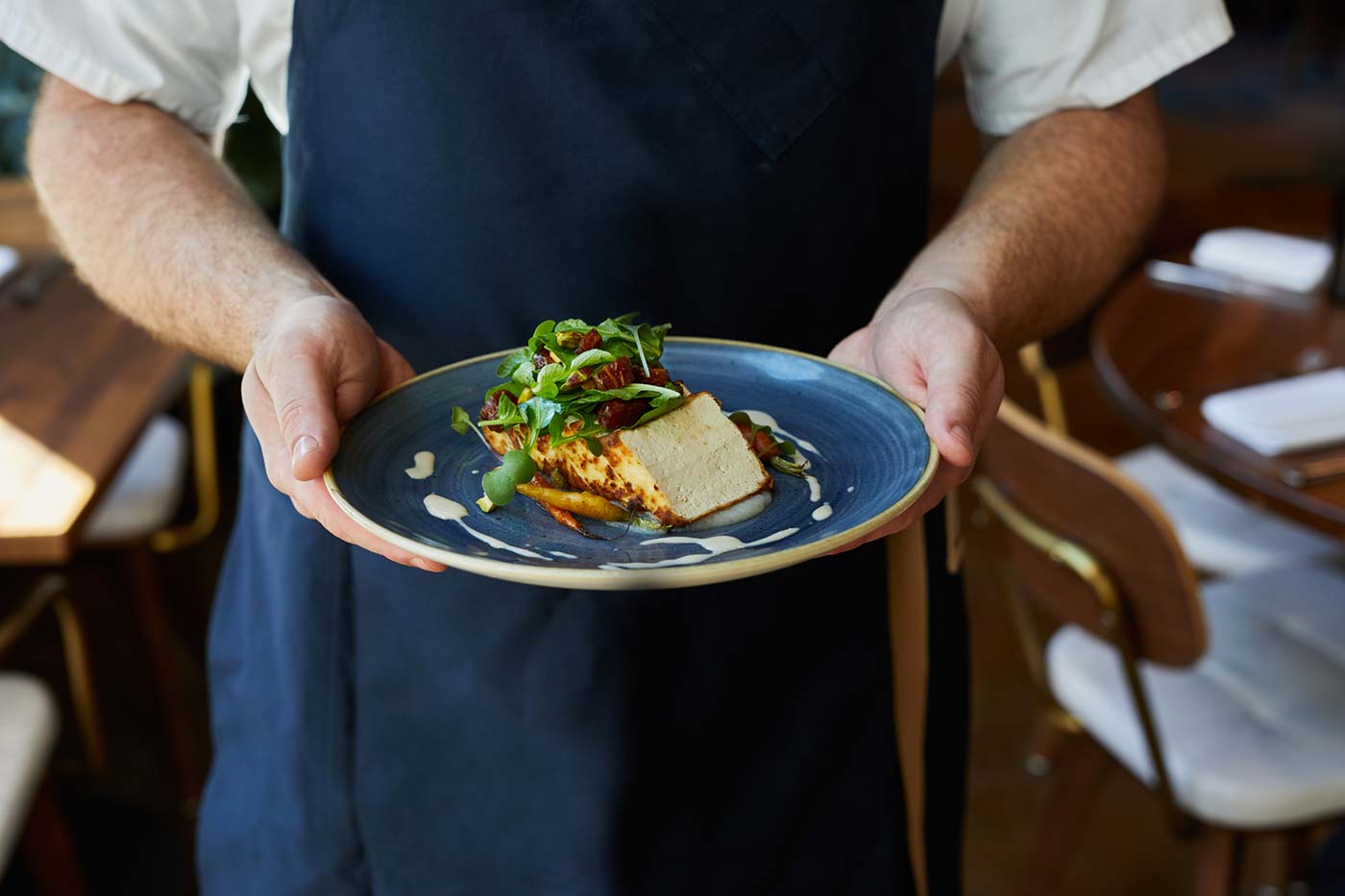Food is what binds us. It’s that warm feeling you get when you’re welcomed into someone’s home for dinner. It’s the joy you share with your family over the holidays when you’re so excited to eat your favorite dishes together. It’s the comfort you feel when you finally get to catch up with your closest friends, or the connection of getting to know new people over a shared plate.
For me, food is a big hug. The smell of my mom’s chicken curry or my grandma’s pound cake coming out of the oven just makes me smile. And cooking those same recipes for my own family preserves those memories. When you ask “Oooh, what’s that spice I’m tasting?” or “That was incredible, how did you make it?” it’s a window into getting to know someone better. They might respond by sharing their own memory or teaching you something you never knew. Enjoying a meal is not only a tangible experience; it’s a foundation to build on and a chance to talk about your own culture and traditions or learn about someone else’s.
I am Yonsei, a fourth-generation Japanese American. Everything I know about cooking Japanese food, I learned from my mother and her closest friends. She and a group of very special Japanese American ladies called themselves The Dames—the Martha Stewarts of their time. They would host fabulous themed dinner parties with special printed menus and courses of food from both Japanese and American origin. At the age of 5, I remember learning that sorbet wasn’t a dessert but a palate cleanser in between courses. They taught me that you “eat with your eyes” first and that flavor was just as important as appearance. I loved to watch and learn from them. I called them my “aunties” even though they weren’t blood related. My mom would send me out to the garden to snip garnishes for all of the dishes: a sprig of Heavenly Bamboo, some fern or gardenias to add the perfect final touch. The Dames wrote a cookbook that is now sold at the Japanese American National Museum in Los Angeles and this inspired me to write two cookbooks of my own: Simply Ramen and Simply Hot Pots.
Just as I learned about my culture and traditions through food, I want the same gift for my family. To combine my heritage with my home, I have a more-Americanized take on Japanese food, always keeping in mind the principles I was taught: to let the food speak for itself and allow its natural flavors, colors and textures to shine. My favorite family dish to create is my take on Taco Tuesday that I call “Sushi Taco Night.” It’s temaki sushi, orhand-roll sushi, using the freshest ingredients: spicy tuna, cracked crab, salmon sashimi, julienne cucumber, sliced avocado, sushi rice, wasabi, ginger, soy sauce and roasted seaweed squares. It’s easy to prepare and since everyone will be making their own, there’s no rushing back and forth to the kitchen.
We also take part in the more traditional holidays. Oshogatsu, or Japanese New Year, is one that brings me back to my childhood. Every time I smell soba (thick buckwheat noodle) soup I think of how the scent would fill our hallways when my siblings and I woke up on New Year’s day. While my mom finished cooking the soup broth, the mochi (pounded rice cake) that we had made the day before with all of our cousins would be puffing up in the oven, growing into light, crispy, pillowy rounds that we dipped into a sweet soy sauce and sugar mixture. These traditions brought luck to the new year with the long soba noodles symbolizing longevity and the mochi representing harmony.
I share a cultural similarity with many friends whose families immigrated to the United States. Our common bond is that we all have a strong drive to preserve the heritage and traditions that have made us who we are. My friend Gurjeet and her husband, Paul Dhanoa, are owners of Tandoori Grill in the Table Mesa neighborhood of Boulder. Not only do they make delicious Indian food from the Punjab region of India, they were food heroes during the horrific King Soopers shooting when they offered free meals to those visiting the memorial. Gurjeet said, “We’ve been feeding South Boulder for 22 years. This just seemed like another opportunity.” In their generosity, they shared traditional dishes like chicken tikka masala and saag paneer.
Gurjeet was born and raised in Canada amongst a large Punjabi community. Her family’s Indian culture lives strong within her and is carried on through holidays like Diwali, weddings, birthdays and through their menu at Tandoori Grill. At these celebrations filled with music, dancing, dress and food, she’d make delicate Indian sweets like ladoos (sweetened round balls) and ras gulahs (cream cheese balls in an infused sugar syrup).
One evening, she invited me and a small group of women to her restaurant after it had closed for a private party and an unforgettable cultural experience. We walked through the door and she had laid out her personal collection of the most beautiful saris in a rainbow of vibrant colors, adorned with intricate beading and delicate matching scarves. She let us each choose one to wear, put on some modern Indian music and taught us a traditional dance, requiring us to keep our feet grounded and move our hips subtly to the music (which, btw, is much more difficult than it seems). The room was filled by the smell of Indian spices coming from the kitchen—fenugreek, cinnamon, coriander and cumin, almost as if it permeated into our skin. Her husband, Paul, made us the savoriest salt and pepper chicken wings, a dish that I didn’t even realize was Indian. After leaving that evening, I felt more connected to her because of our shared experience. I had gained a better understanding of a culture I didn’t know much about.

Paul hunts locally and often brings back his fish and game to the restaurant; she said he’s always so excited to think of new ways to prepare them. Some of his favorites are tandoori salmon—marinated in Indian spices and baked in the tandoor (an Indian clay or metal oven used for cooking at high temps)—and tamarind duck—duck halves simmered in a reduced tamarind chutney. Gurjeet continues to use Indian spices in her everyday cooking as well. She suggests enhancing a steak with garam masala spice, marinating chicken with yogurt and tandoori spices or making a pizza withsaag instead of marinara sauce.
Another friend who has shared our same journey to preserve her culture through food is Thuy Nee Huynh-Steward. She is a Vietnamese mom from my youngest daughter’s elementary school. She approached me because she’s thinking of opening a vegan Vietnamese restaurant and knew I wrote cookbooks so thought I’d have some insight. Thuy was born in Vietnam but immigrated to the U.S. when she was a baby. She has said that food is so important in Vietnamese culture that they greet each other by asking “Have you eaten yet?” Thuy’s family has been in the U.S. for over 40 years and keeping her culture and traditions alive has been a constant effort. She practices Buddhism, so being vegan is part of her belief system. Her plant-based versions of traditional Vietnamese dishes are inspiring.
Her signature dish is her vegan banh mi sandwich. I learned that Vietnam was colonized by the French so they have many French influences in their cuisine like the baguette and pâté. She recently brought these sandwiches to my home so that I could try them. Each bite was layered with flavor and texture: a crunch from the bread, soft dough on the inside; savory fried tofu; creamy vegan pâté; crisp lettuce; crunchy pickled daikon radish; carrots; a little kick from some jalapeño; vegan mayo; cilantro and a drizzle of tamari. She makes her own vegan pâté using lentils and mushrooms. She’s been all over Colorado to find the perfect baguette but finally found them at a wholesale bakery in Denver called Bluepoint Bakery. She also told me that banh mi are traditionally shared with a cup of Vietnamese coffee, so she made individual pressed coffee for us with a sweet layer of coconut cream that was divine. I learned so much about her—from her background, to why being vegan is important to her, to why Vietnam has so many French influences.
I am so proud to know these women. I think many cultural traditions are carried on with mothers and daughters at the forefront and it’s so uplifting to see how it comes to life when you meet new people. As children of immigrants, we embrace our culture and background because it’s what we were taught and it’s how we express our individuality and identity. The food we cook embodies the richness of our heritage, pays homage to our family and honors our ancestry. My hope is that you’ve learned a little about each of us and that it inspires you to seek out more.




